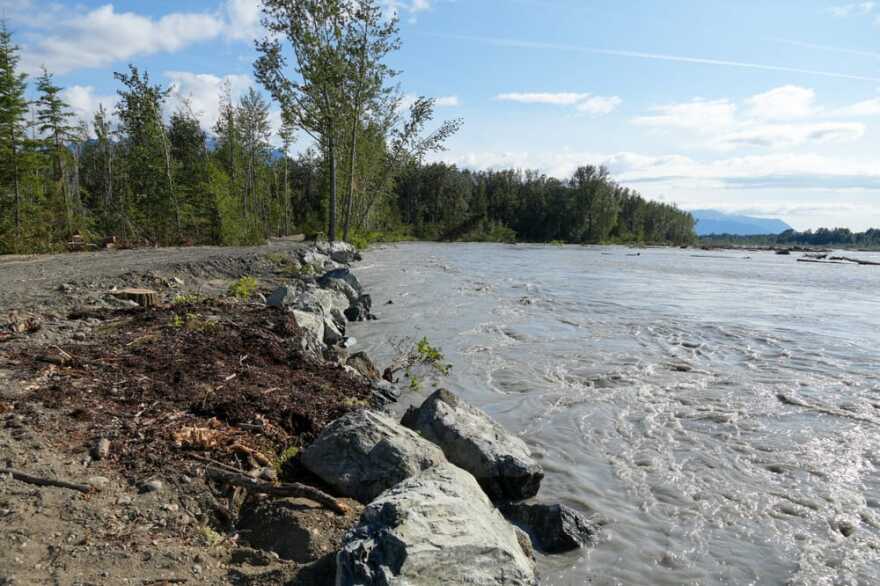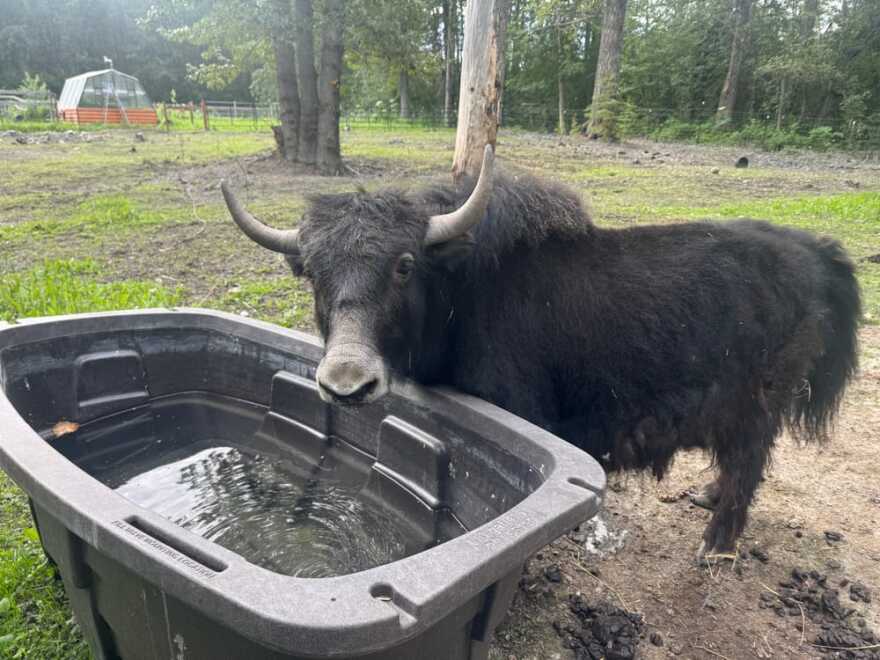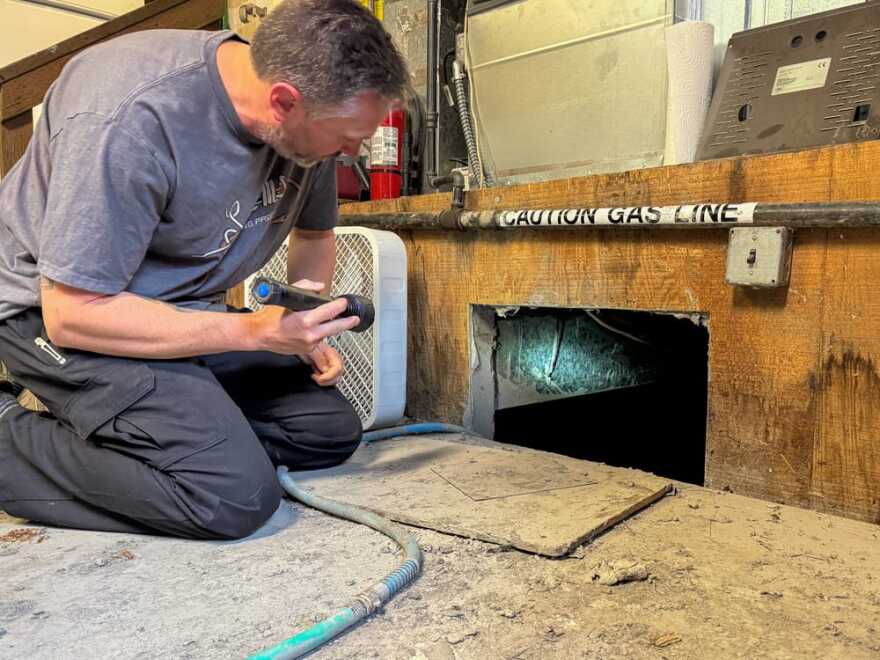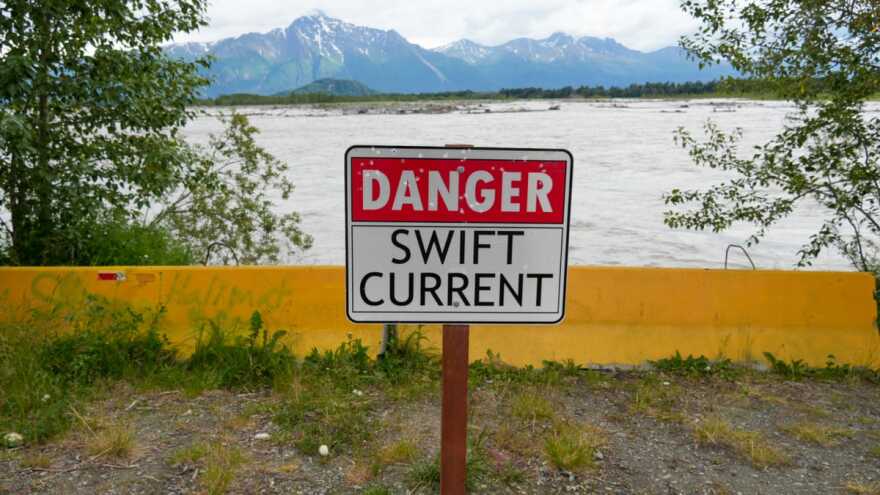What you need to know:
- A new state project aims to protect about 25 miles of highway from erosion caused by the Matanuska River. The effort focuses on several sections along the Glenn Highway near Sutton and the Old Glenn Highway near Butte, where recent flooding affected private properties.
- A survey for the federally-funded project is scheduled for this year, with construction set to begin next year and continue through 2030. The project's goal is to protect highway infrastructure, not private land. State and borough officials say they have limited authority to directly assist affected homeowners.
- Some residents impacted by flooding believe the project should be fast-tracked and that the borough should have warned them about recent rising water. Borough officials said they did not issue warnings because the flooding took them by surprise.
BUTTE — A major road state project set to begin next year aims to protect about 25 miles of highway from new erosion caused by the churning Matanuska River. The project includes a section of riverbank near Butte, where flooding recently crept within feet of the road and flowed over about 10 private properties.
The Glenn Highway and Old Glenn Highway Erosion Protection Project is designed to stabilize the riverbank in at least five separate areas in and north of Sutton and along several miles from the Matanuska River Bridge toward Butte, according to state documents.
The federally funded project could cost up to $40 million, state transportation officials said. A project survey is expected to be completed this year, according to state bid documents released this month.
Construction is expected to start next year and continue through 2030, said Justin Shelby, a spokesman for the Alaska Department of Transportation. Crews will prioritize the sections with the most severe erosion and greatest risk to the roadway, he said.
That could mean the area of recent flooding near Butte will be the first to receive work, he said. State crews installed a third section of emergency revetment there last week — the third such fix since the river overtopped its bank and sent water toward the highway over the Summer Solstice weekend.
“Under current conditions, the Old Glenn at Maud Road and Milepost 16.7 are considered the highest-priority sites,” Shelby said. “Priorities may shift depending on the condition of the Matanuska River banks as channels migrate, which is expected.”
Initial planning for the project began last summer, when the surging river came within feet of the Glenn Highway near King Mountain north of Sutton, triggering days of emergency repairs and temporary lane closures.
Shelby said the new protection effort targets several miles along the river known for rapid erosion during high water flow: Mile 13 and Mile 17 of the Old Glenn Highway near Butte — including the section that received emergency repairs this month — and between Mile 60 and Mile 80 of the Glenn Highway, which starts in Sutton and runs north. Additional riverbank sections can be added to the project as needed, the documents say.
Specific details on what the fixes may include are not yet available. The erosion prevention work is intended to protect the state’s roadways — not private property, Shelby said.
“With this type of project, it would be to protect our infrastructure,” he said.
Who is responsible for protecting residents?
The powerful river has long affected road and home development along its banks.
In 1985, the state Department of Transportation and Public Facilities built a 1,500-foot revetment to protect the highway near Butte, stretching north from Ye Old River Road, according to a project history provided this month by Matanuska-Susitna Borough Public Works Director Tom Adams. Crews extended it about 500 feet in 1989 to just north of where Maud Road meets the Old Glenn Highway, he said.
Nine years later, in 1998, borough crews built a log-and-gravel berm attached to the revetment to block overflow into the area, Adams said. That berm, known as the Maud Road Extension, serves as a levee and was among the sections recently washed out by flooding and repaired by the state.
The river’s impact on private property remains an ongoing challenge. State and local officials initially said last month's flooding was caused by revetment breaches, but later determined that was not the case, Adams said. Any revetment once installed in the area was gone before this year, leaving the snowmelt-swollen river to simply overtop the bank, he said.

While many fixes have been proposed and studied over the years — including dredging the river and constructing a new series of dikes and revetments — none have gained enough traction or funding to proceed.
The borough lacks the legal authority to directly assist private property owners beyond emergency rescues and state- or federally funded buyouts, said Taunnie Boothby, a planner and floodplain manager for the borough.
No such rescues have been required in recent years, officials said. A group of property owners along the river near Butte and Sutton participated in a 2018 buyout program, Boothby said, but others declined, saying the payments were too low and they didn’t want to leave their homes.
Two of those residents are Brooke and Gavin Ockerman. The couple moved onto a 3.2-acre property with their family in 2018, and the borough immediately offered them a buyout under the federal grant program, they said in a recent interview.
They turned down the offer because they wanted to stay in their new home, Gavin Ockerman said. Their property sits five acres from the riverfront, and the only way water can reach it is by flowing down the highway, he said.
But that’s exactly what happened in the early hours of June 21, when Ockerman awoke to find water coursing through the yard. It left heavy debris against a new stretch of fencing and threatened their home, vehicles and more than a dozen animals — including a pair of yaks.

The family moved their vehicles to a neighbor’s property, while members of the local farming community helped shelter their animals until the water receded, they said.
Flowing river water entered their garage and shop, flooding storage and work areas and a crawl space under their home, but never reached their living area, they said. It also destroyed their furnace. They planned to have a dumpster delivered over the weekend to begin disposing of water-damaged items, including the family’s Christmas decorations. They hoped to salvage a collection of uniforms and memorabilia from Ockerman’s 20 years of military service.
Federal flood insurance will cover about $41,000 in structural damage, they said. The policy does not cover destroyed personal belongings.

The couple said the borough and state can and should do more to address the danger from the river. They believe the state should fast-track new revetment construction, and the borough should have warned them the water was coming.
“How this really boils down to me is we could have been warned,” Brooke Ockerman said. “Somebody could have warned us, and we could have prepared.”
Gavin Ockerman said he spoke to a borough employee taking photos and monitoring water levels on June 20, the day before the situation became serious. But no one warned them it might escalate, the couple said.
“It would have taken somebody 10 minutes — a trooper, to go to every home, or the borough, to go to every home — and go, ‘Here’s the situation,’” Brooke Ockerman said.
Borough officials said they didn’t issue a warning because they, too, were caught off guard. The area near Maud Road where the flooding began regularly experiences overflow, and officials didn’t realize this event was different until it was too late.
“Based on past experience with this river, nothing was appearing abnormal,” said borough spokesman Stefan Hinman. “This area has a long history of water showing up. ... There wasn’t any indication that anything major was coming.”
Just what else officials can do to assist families such as the Ockermans remains unclear.
While the state’s new erosion control project is focused on the highway, it could also help some private property owners because it targets the area from which the river flowed toward homes last month, the Ockermans said.
Meanwhile, Boothby said she is working to apply for additional federal grants to offer buyouts or assistance to property owners along the riverfront. Whether the funding will be available or whether any homeowners are interested remains to be seen, she said.
“I think that there has to be a discussion about what is reasonable for this location,” she said.
-- Contact Amy Bushatz at contact@matsusentinel.com

